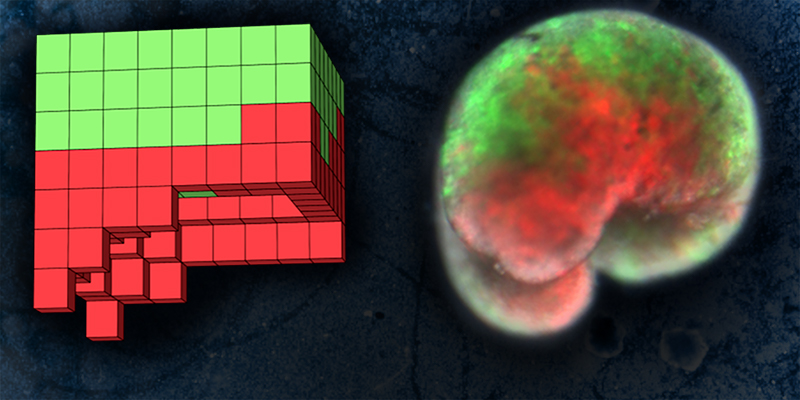Scientists say they’ve followed a supercomputer‘s instructions to create the first-ever “living robots” using stem cells harvested from frogs.

The living machines are less than a millimetre in size and can move, pick up tiny objects and heal themselves, researchers at Tufts University and the University of Vermont say. They live for seven to 10 days and die after their function is complete.
But if you’re getting Jurassic Park vibes from all this frog-splicing science, don’t worry: they’re not making dinosaurs. They’re making something completely different.
“These are entirely new life forms,” said project co-leader Michael Levin, director of the Allen Discovery Center and the Center for Regenerative and Developmental Biology at Tufts.
“They are living, programmable organisms,” Levin told the Guardian. “They have never before existed on Earth.”
The AI behind the designs used an “evolutionary algorithm” to recommend several cell configurations based on contractible skin and heart cells. It ran those potential designs through a simulation, then scientists chose the best performers and built them out of frog cells with surgical tweezers.
The living machines have been dubbed “xenobots” after the African clawed frog (Xenopus laevis) that supplied the stem cells.
“They’re neither a traditional robot nor a known species of animal,” robotics expert and co-lead researcher Joshua Bongard said in a news release from the University of Vermont.
Levin explained that the frog cells have been used to make something new entirely.
“It’s 100 per cent frog DNA — but these are not frogs,” he said. “As we’ve shown, these frog cells can be coaxed to make interesting living forms that are completely different from what their default anatomy would be.”
Levin says the living robots could be used for a variety of purposes, such as rooting out radioactive material, gathering microplastics from the ocean or scraping plaque out of a person’s arteries.
The findings suggest these surgically arranged robots could be scaled up to create a pipeline of larger “novel life forms,” researchers wrote in their paper. Their work was published Monday in the Proceedings of the National Academy of Sciences (PNAS) journal.
“Although some steps in this pipeline still require manual intervention, complete automation in future would pave the way to designing and deploying unique, bespoke living systems for a wide range of functions,” they write.
Each AI model looks like a game of three-dimensional Tetris, with the various cells arranged as blocks.
Researchers say organic machines can be superior to ones made of steel or plastic because they can heal and renew themselves.
“It’s impossible to know what the applications will be for any new technology, so we can really only guess,” Bongard told the Guardian.
However, the notion of making a new creature with the building blocks of an old one raises difficult ethical questions, according to Thomas Douglas, a senior research fellow at the Oxford Uehiro Centre for Practical Ethics.
“At what point would they become beings with interests that ought to be protected?” he said in an interview with the Guardian. “I think they’d acquire moral significance only if they included neural tissue that enabled some kind of mental life, such as the ability to experience pain. But some are more liberal about moral status.”
Thomas added that many might question whether the xenobots should be considered machines or living creatures.
Levin says the xenobots are simple creatures that can’t reproduce or evolve. They are pre-loaded with a food source and they die when that runs out, much like a machine with a battery.
Levin says his research could have a wide range of medical applications, such as reprogramming tumours or fixing birth defects.
“The aim is to understand the software of life,” he said.







Comments